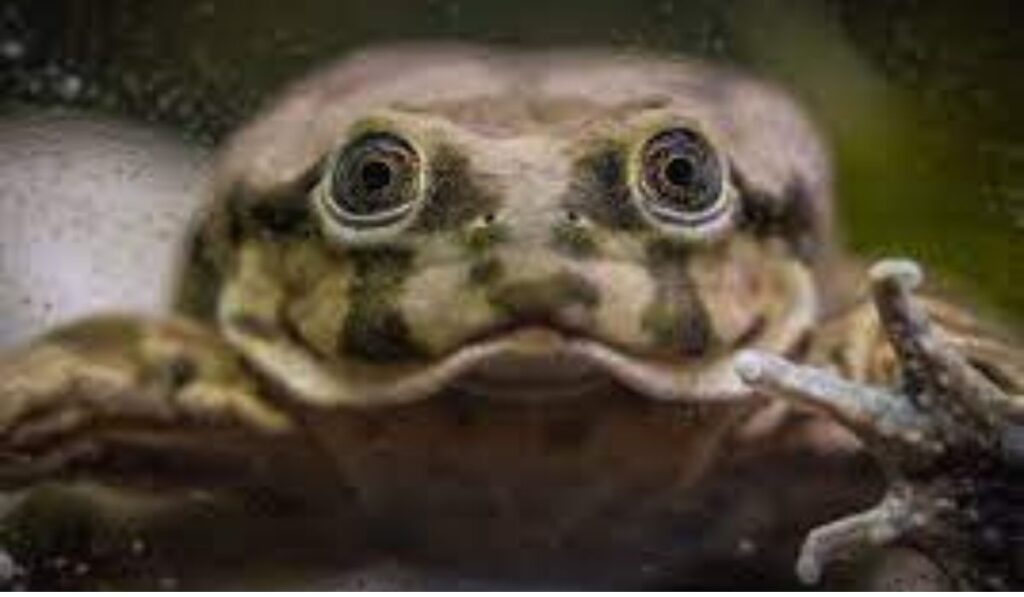Nestled high in the Andes Mountains, straddling the border between Peru and Bolivia, lies Lake Titicaca, the highest navigable lake in the world. This ancient body of water is not only a cultural and historical treasure but also a critical ecosystem supporting a diverse array of wildlife. Among its many inhabitants, the Lake Titicaca frog (Telmatobius culeus) stands out as a remarkable species due to its unique adaptations and the urgent conservation challenges it faces.
Unique Adaptations of the Lake Titicaca Frog
The Lake Titicaca frog is an amphibian species uniquely adapted to the high-altitude environment of its namesake lake. Living at elevations over 3,800 meters (12,500 feet), these frogs have evolved several fascinating traits to survive in such extreme conditions.
Respiratory Adaptations
One of the most notable features of the Lake Titicaca frog is its extraordinary skin, which is loose and baggy, providing a large surface area relative to its body size. This adaptation is critical for its survival, as the frog relies heavily on cutaneous respiration (breathing through the skin) to supplement its oxygen intake. The high altitude of Lake Titicaca means that oxygen levels are lower than at sea level, making this adaptation particularly important. The frog’s skin is highly vascularized, allowing efficient gas exchange directly with the surrounding water.
Aquatic Lifestyle
Unlike many other amphibians, the Lake Titicaca frog is fully aquatic, rarely leaving the water. This lifestyle is supported by its flattened body and large, webbed feet, which make it an adept swimmer. The frog’s preference for deep waters also helps it avoid many predators and extreme environmental conditions.
The Ecological Role of the Lake Titicaca Frog
The Lakes Titicaca frog plays a crucial role in its ecosystem. As both predator and prey, it helps maintain the balance of aquatic life in the lake. The frogs primarily feed on aquatic invertebrates, including insects and crustaceans, helping to control their populations. In turn, the frogs serve as a food source for larger predators such as birds and fish.
Indicators of Environmental Health
Due to their sensitivity to environmental changes, amphibians like the Lake Titicaca frog are often considered bioindicators. The health of their populations can provide valuable insights into the overall condition of their habitat. Unfortunately, recent declines in frogs populations signal significant ecological disturbances in Lake Titicaca.
Conservation Challenges
The Lake Titicaca frog faces numerous threats, both natural and anthropogenic, that have led to a drastic decline in its population. Understanding these challenges is essential for developing effective conservation strategies.
Habitat Degradation
One of the most pressing threats to the Lake Titicaca frogs is habitat degradation. Pollution from agricultural runoff, untreated sewage, and mining activities has severely impacted the water quality of Lake Titicaca. These pollutants introduce harmful substances into the water, disrupting the delicate balance of the ecosystem and posing direct health risks to the frogs.
Climate Change
Climate change poses another significant threat to the Lake Titicaca frog. Changes in temperature and precipitation patterns can alter the lake’s water levels and temperature, affecting the frog’s habitat. Additionally, increased UV radiation at high altitudes can harm amphibians, which have sensitive skin.
Overharvesting and Illegal Trade
The Lake Titicaca frog has also been threatened by overharvesting. Locally known as the “scrotum frog” due to its loose skin, it has been harvested for traditional medicinal purposes and as a food source. Despite legal protections, illegal trade continues to be a problem, exacerbating the species’ decline.
Conservation Efforts
Efforts to conserve the Lake Titicaca frogs involve multiple approaches, including habitat protection, pollution control, and captive breeding programs.
Habitat Protection and Pollution Control
Protecting the frog’s habitat is crucial for its survival. This involves addressing pollution sources and implementing measures to improve water quality in Lake Titicaca. Governments and environmental organizations are working together to reduce agricultural runoff, improve sewage treatment facilities, and regulate mining activities to minimize their environmental impact.
Captive Breeding Programs
Captive breeding programs have been established to help bolster the population of the Lake Titicaca frog. These programs aim to breed frogs in controlled environments and later reintroduce them into their natural habitat. Successful breeding and reintroduction efforts can help restore population numbers and genetic diversity.
Raising Awareness and Community Involvement
Raising awareness about the plight of the Lake Titicaca frogs is essential for its conservation. Education programs targeting local communities can help reduce illegal harvesting and promote sustainable practices. Engaging local stakeholders, including indigenous groups, in conservation efforts ensures that initiatives are culturally appropriate and have long-term support.
Conclusion
The Lake Titicaca frog is a unique and remarkable species that embodies the delicate balance of its high-altitude ecosystem. However, it faces numerous threats that jeopardize its survival. Addressing these challenges requires a multifaceted approach involving habitat protection, pollution control, captive breeding, and community engagement. By working together, we can help ensure the survival of this extraordinary frog and the health of its ecosystem for future generations.
Also Read: Do Bears Have Tails? Exploring The Anatomy And Function Of A Bear’s Tail.







